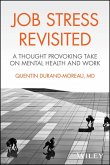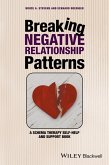Burnout has become a popular indicator of the distress that individuals can experience at work. In Breaking Point: Job Stress, Occupational Depression, and the Myth of Burnout, the authors, in the context of more than a decade of research, show how the phenomenon hidden behind the label of burnout is, in fact, depressive in nature.
This book unravels the connections between work, depression, and burnout. The authors underline the dangers of mislabeling a depressive condition as burnout, including misdiagnosis, improper treatment, and unaddressed suicidality. Finally, they offer a path forward for individuals and society. By recognizing the depressive roots of burnout, human resources specialists and occupational health professionals can refer employees for appropriate treatment and understand how and why problematic working conditions must be changed.
This book unravels the connections between work, depression, and burnout. The authors underline the dangers of mislabeling a depressive condition as burnout, including misdiagnosis, improper treatment, and unaddressed suicidality. Finally, they offer a path forward for individuals and society. By recognizing the depressive roots of burnout, human resources specialists and occupational health professionals can refer employees for appropriate treatment and understand how and why problematic working conditions must be changed.
- Review the history of depression and burnout and their connection to work
- Learn about research that supports occupational depression as a more valuable construct than burnout
- Understand and address the stigma that inhibits affected employees from seeking treatment
- Discover specific, research-grounded actions that occupational health specialists can take to prevent and address depression and burnout in the workplace
Dieser Download kann aus rechtlichen Gründen nur mit Rechnungsadresse in D ausgeliefert werden.









